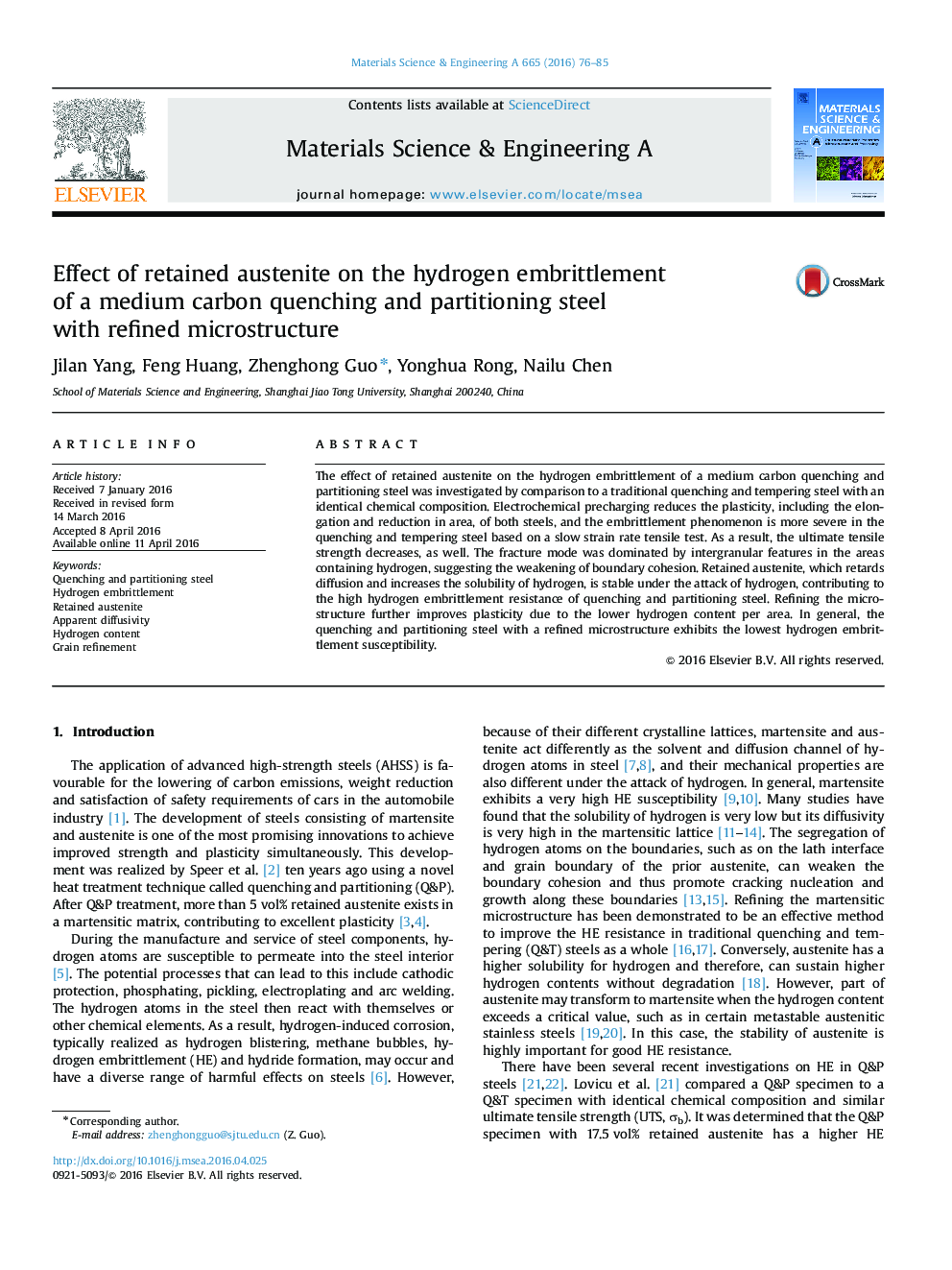| Article ID | Journal | Published Year | Pages | File Type |
|---|---|---|---|---|
| 1573229 | Materials Science and Engineering: A | 2016 | 10 Pages |
Abstract
The effect of retained austenite on the hydrogen embrittlement of a medium carbon quenching and partitioning steel was investigated by comparison to a traditional quenching and tempering steel with an identical chemical composition. Electrochemical precharging reduces the plasticity, including the elongation and reduction in area, of both steels, and the embrittlement phenomenon is more severe in the quenching and tempering steel based on a slow strain rate tensile test. As a result, the ultimate tensile strength decreases, as well. The fracture mode was dominated by intergranular features in the areas containing hydrogen, suggesting the weakening of boundary cohesion. Retained austenite, which retards diffusion and increases the solubility of hydrogen, is stable under the attack of hydrogen, contributing to the high hydrogen embrittlement resistance of quenching and partitioning steel. Refining the microstructure further improves plasticity due to the lower hydrogen content per area. In general, the quenching and partitioning steel with a refined microstructure exhibits the lowest hydrogen embrittlement susceptibility.
Keywords
Related Topics
Physical Sciences and Engineering
Materials Science
Materials Science (General)
Authors
Jilan Yang, Feng Huang, Zhenghong Guo, Yonghua Rong, Nailu Chen,
